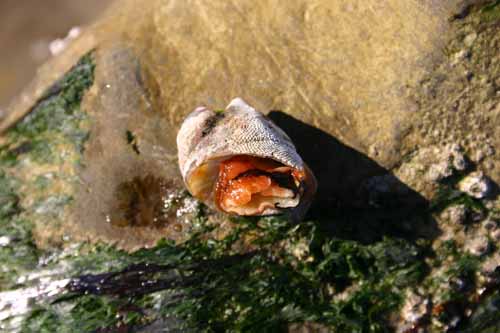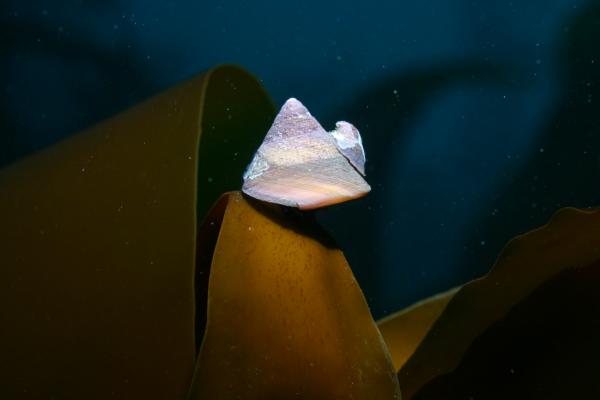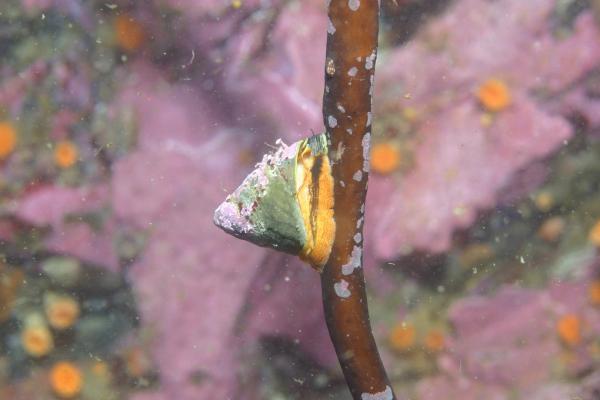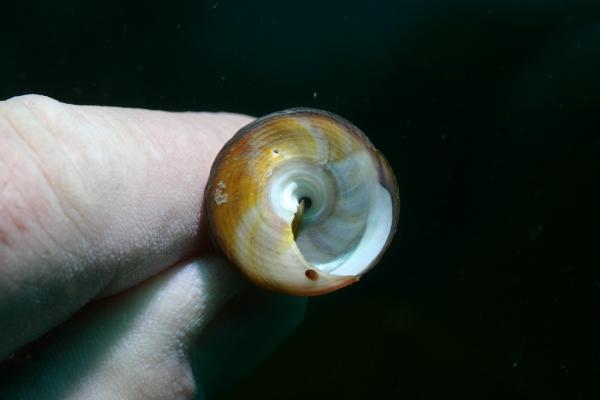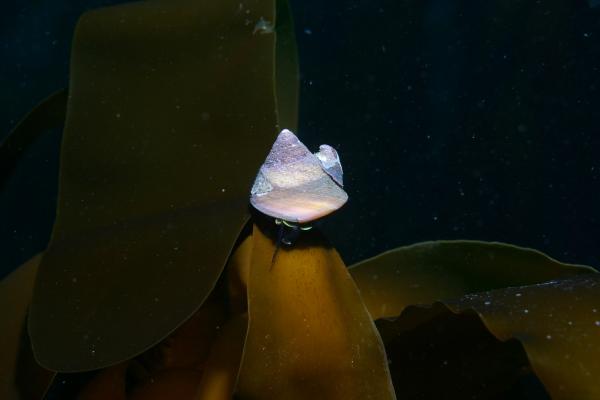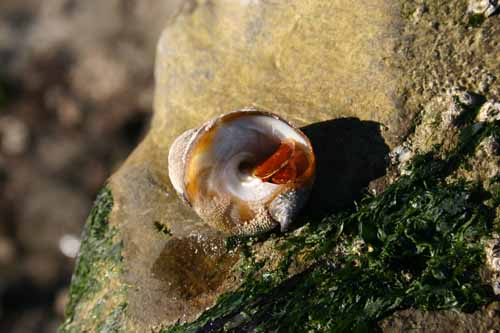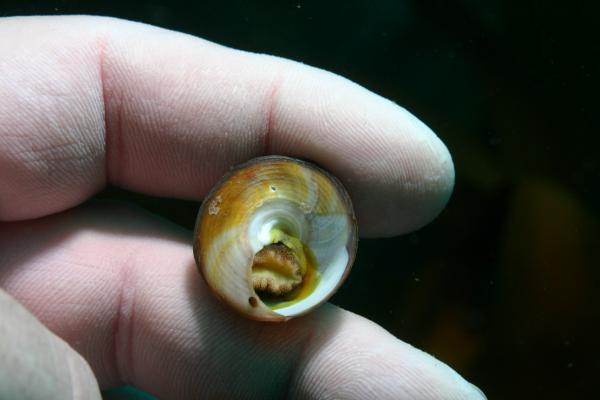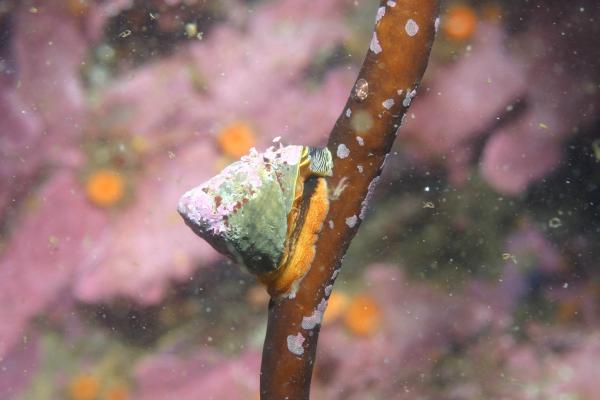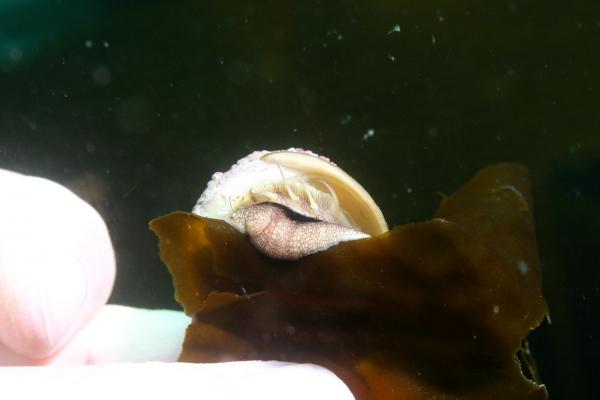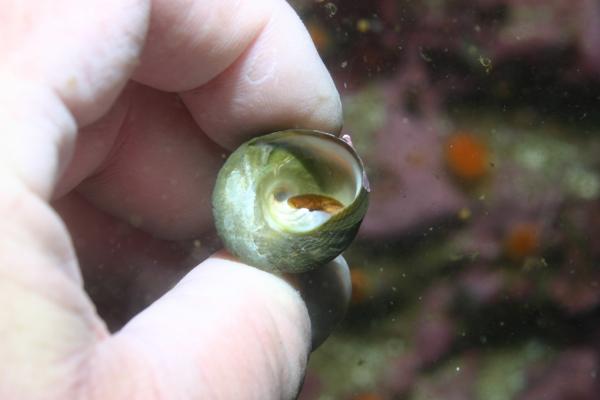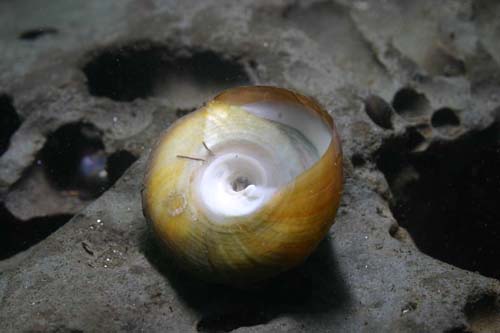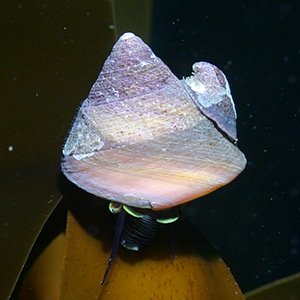
Monterey turban snail
Tegula montereyi
Overview
Key Features:
Open umbilicus, tooth present, tan shell.
Similar Species:
Black turban snail (Tegula funebralis)Brown turban snail (Tegula brunnea)
Dusky turban snail (Promartynia pulligo)
Primary Common Name:
Monterey turban snailSynonymous name(s):
Chlorostoma montereyiGeneral Grouping:
Snails, limpets, abalone, chitonsGeographic Range:
Central California (Bolinas Bay) to southern California (Santa Barbara Island).
Bolinas Bay, California down to Santa Barbara Island off the coast of southern California.
Northern latitude extent:
37.894134Southern latitude extent:
33.473322Intertidal Height:
0 to feet (0 to meters)Notes:
Can occur in the low intertidal.
Subtidal Depth Range:
Minimum Depth: 0 meters or 0 feetMaximum Depth: 12 meters or feet
Notes:
In central California, most commonly found in the shallow subtidal (0-6 m), but can occur deeper (to 15 m). Often on kelp, and in particular giant kelp (Macrocystis pyrifera).
Habitats:
bay (rocky shore), exposed rocky shore, kelp forest, protected rocky shoreNotes:
Associated with kelp forests and subcanopy species. A rocky reef species that feeds on algae attached to the rocky bottom. Can climb up subcanopy and canopy-forming kelp, all the way to the surface.
Abundance:
Relative Abundance:
Uncommon in central California, encountered at shallow depths on rocky reef habitat with abundant algal cover. Least encountered Tegula species in central California.
Species Description:
General:
This is a member of the Trochidae family (top-shells), which are typically conical in shape, have a nacreous interior, rounded aperture (opening through which the snail emerges), and with a proteinaceous operculum (shield that closes over the aperture). Species of Tegula have one more denticles (tooth-like projections) near the base of the columella (the axial pillar around which the shell coils). In profile the shells are triangular, with almost straight sides, and faint sutures between the whorls/spires. The umbilicus (area adjacent to the aperture) is open and a tooth (denticle) is present with an obious spiral. Shell color tan, brown or golden and not uniform, but the shell is often covered with epibionts that mask the true color except where it is newest near the head. The margin of the shell has a bright lime-green line, likely due to mantle tissue, which secretes the shell. The head is black with very thin white stripes (horizontal), black cephalic tentacles, and a foot that is black dorsally and tan basally (sometimes orange). The epipodial tentacles are cream-colored with black flecks.
Distinctive Features:
Black and tan foot, black head with thin white stripes, and whorls are flattened and hard to see, with very faint sutures. Umbilicus open and "tooth" present. Tan shell but often covered with bryozoans or encrusting algae.
Size:
Shell diameter to 45 mm. Height to about 40 mm.
Natural History:
General:
This is one of several trochid and turbinid snails that is typically found in the kelp forests of central California. Relatively little is known about it, other than it is consumed by various predators and typically can be found on giant kelp Macrocystis pyrifera.
Predator(s):
Sea stars, Kellet's whelk, octopus, moon snails and crabs.
Prey:
Feeds on algae, usually kelp if it is available.
Feeding Behavior:
HerbivoreNotes:
Uses a radula (belt-like organ with numerous teeth on it) to rasp away the surface layer of tissue on blades of kelp and other algae. Usually does penetrate through the blade, but it is possible to see grazing marks as furrows, often in a spiral or zig-zag pattern. Can often see them actively feeding on giant kelp while looking on the other side of the blade they are rasping. Teeth on the radula are constantly being replenished as the front-most are worn or damaged.
Seasonal Behavior
Reproduction:
Presumably like others trochid snails it is a broadcast spawner. Season of spawning is not known to us.
References
Jensen, G.C., D.W. Gotshall, and R.E. Flores Miller. 2018. Beneath Pacific Tides: subtidal invertebrates of the West Coast. Mola Marine, Bremerton, WA. 296 pp.
- Morris, R.H., D.P Abbott, and E.C. Haderlie. 1980. Intertidal Invertebrates of California. Stanford University Press, Stanford, California. 690 p.
Related Information
Project Database
Photo Library
Click on an image below to view a larger version in the SIMoN Photo Library. You will also be able to view important information on each photo such as photographer, date, caption and more
